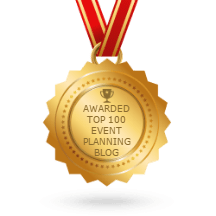Events are unquestionably useful to businesses of all sizes and industries. In fact, they are estimated to account for almost a quarter of the average business’ marketing expenditure. Even at the height of the COVID-19 pandemic, there were still nearly three million professional events. But as any event planner knows, it takes a lot of work to create effective events. At the same time, businesses also face the challenge of determining their success. Event planners may wonder how to choose the right key performance indicators (KPIs), ensure they’re creating valuable content, and fully leverage the strategies of event marketing.
In this article, we’ll explore what event marketing is, why it’s important, and offer concepts, tactics, and tools to help you build an effective strategy.
What is event marketing?
At its core, event marketing is the practice of holding an experience (aka the event) that markets a business, product, service, or any combination of those elements. Marketing events aim to foster engagement that will move the needle on KPIs such as lead generation, sales acceleration, and retention.
The benefits of event marketing for businesses
Effective event marketing can bring value in multiple ways. For one, attendees receive valuable knowledge and form long-term relationships. Another is that businesses benefit from connecting with their prospects throughout the customer lifecycle. Consider some of the most significant advantages of event marketing:
- Improved brand recall
Events can help attendees establish brand affinity by immersing them in a brand’s atmosphere. Customers can see firsthand how your business meets their needs and solves their pain points. They can also interact with brand representatives and other customers who share the same interests. These associations will be connected with your brand in perpetuity, and if they’re positive experiences, make your brand their preference. - Stronger retention rates
Customer retention is essential for a number of reasons, including the fact that retained customers shop more frequently and spend more money. Moreover, increased customer retention has been positively associated with greater revenue. - Better brand interactions
Metrics such as impressions and clicks are important when it comes to marketing. But how can you make your metrics even more personal and valuable? Interactions that take place at events can offer both your business and customers intimacy and connection – high value elements that can’t always be quantified like other metrics. - Easily grow your customer base
Once you’ve created those positive brand interactions, attendees will be more likely to choose your brand and convert to paying customers. For example, if a customer had a meaningful interaction around your new line of reading glasses, they’ll be more likely to think of your brand when they’re shopping for a new pair. This means less time and money spent on your customer acquisition strategy as you automatically gain new ones from your event.
- Increase sales
When you leverage events to market new products or services, you offer attendees the opportunity to try before they buy. In a world of free trials and demos, most customers have become accustomed to trying out a product or service before they buy it to make sure they like it. By using your events to test or demo products, you can show off your amazing services while also meeting your attendees’ expectations.
Ways to create an effective event marketing strategy
There are many elements that go into building an event marketing strategy that will help you meet your goals. And speaking of goals, one of the most important steps is establishing what your business goals are for your event and how you’ll know if you’ve achieved them. Identifying KPIs such as number of registrants, revenue, and engagement is a good first step in getting clear on your goals.
As you dig into your KPIs, consider these two types: lagging and leading. Lagging indicators are outcome-driven and take measurements after the event. While lagging KPIs are easier to assess than leading ones, they have less impact on the program. Instead, they allow you to detect patterns and adapt your plan in the future.
Leading indicators can help you define parameters that, when met, indicate a high likelihood of success. It could involve a certain number of individuals registering for an event on a specific day before it may be a leading sign of profitability.
Creating a checklist of planning tasks that allows you to allocate responsibility for each job and to set self-imposed deadlines will help you ensure that you don’t forget any important steps in the planning process. This can also help determine the type of event that will best help you achieve your goal.
Conclusion
Event marketing can be a critical part of an organization’s overall business strategy, leading to more engaged customers, increased revenue, and better customer retention. But creating an effective marketing strategy requires planning and goal setting (don’t forget about those KPIs) to ensure that your events are a success and beneficial to you and your customers.
As you plan your event, check out InGo to see how we can help you skyrocket your attendance. We’re the #1 tool for community referral marketing and can help you solve the biggest event marketing challenges, driving more attendees and engagement.


